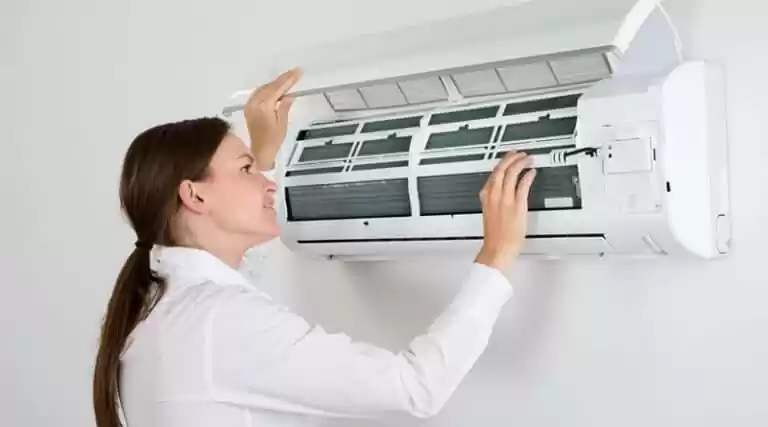Schedule An Annual Inspection
Scheduling an annual inspection for your HVAC system is a great way to ensure that your system continues to function properly and at peak efficiency. During the inspection, a professional can check for any problems, such as broken parts or clogged filters.
They can also spot potential issues before they become full-blown problems. In addition, they can make sure all safety measures are in place, like checking for carbon monoxide levels or other dangerous gasses that may leak from the heating components of your system.
Having an annual inspection gives you peace of mind knowing that your system will be able to last through the upcoming summer months without any major issues. A trusted expert can offer advice on any potential repairs and offer preventative maintenance suggestions to keep your system running optimally throughout the season.
Investing in an annual inspection is a small price to pay compared to the major repairs that could potentially arise from neglecting to inspect and maintain your HVAC regularly.
Clean Or Replace Filters
Cleaning or replacing filters is one of the most important ways to keep your HVAC system running efficiently and improve air quality. Proper maintenance of your filters helps prevent buildup and clogging, which can lead to costly repairs and a decrease in energy efficiency.
Filters may need to be replaced at least once a year, depending on factors such as the type of filter used, the location of the system, and the condition of air in your home or business.
When it comes time to replace filters, carefully inspect each one for any signs of deterioration or damage. You may also want to consider switching from disposable filters to more efficient reusable ones that you can regularly clean instead.
Doing so will save money on replacements in the long run and reduce the amount of waste produced. If you’re unsure about what type or size filter you need for your system, reach out to a professional who can provide advice on what’s best for your situation.
Monitor Hot Spots
Monitoring hot spots is an important step to maintaining comfortable temperatures in a room throughout the summer months. Hot spots are caused by air escaping easily through walls, windows, or doors, so it’s important to seal any gaps and cracks where warm air may be leaking out of your home.
Installing insulation is also key to preserving energy efficiency and keeping the air inside your house at a comfortable temperature.
You can check for hot spots throughout your home by feeling around walls and floors for any warm areas. If you find any hot spots, inspect the area closely for poor insulation or gaps that need sealing.
It’s also a good idea to keep an eye on any blinds or curtains you have, as these can cause hot spots when left closed for long periods. Implementing these measures will help maintain comfortable temperatures inside your home during the hottest summer days.
Make Sure Vents Are Not Blocked
Blocked vents can cause strain on your HVAC system and lead to uncomfortable indoor temperatures. To avoid this, make sure all air vents in every room of your home are free from furniture or other items that may block airflow.
Pay close attention to any area where furniture is placed near a vent, as even small objects like books can restrict the flow of air.
It’s also important to regularly check that nothing has fallen behind furniture and is blocking the vent. This can happen if pets or other animals play near the vents, so be sure to move furniture around periodically to ensure easy access to your HVAC system.
Keeping your vents clear of obstructions will help ensure maximum efficiency and comfortable indoor temperatures all year round.
Adjust Settings Appropriately
To ensure energy efficiency and comfortable indoor temperatures during the summer months, it’s important to adjust your thermostat settings accordingly. Lowering or raising the temperature by several degrees can help reduce strain on your HVAC system and keep it running smoothly.
Different settings should be used in winter versus summer months, so make sure you take into consideration how the weather may affect performance.
For example, keeping the thermostat higher during warm days will reduce energy usage compared to when temperatures are cooler. Adjusting your settings appropriately will help maintain comfortable indoor temperatures while conserving energy at the same time.
Maintenance Of The Indoor And Outdoor Units
Regularly maintaining your HVAC system is essential for keeping it running properly. This includes cleaning both the indoor and outdoor units, as well as checking for any dust buildup or debris that may restrict airflow.
For indoor units, use a damp cloth to gently wipe away any dirt or dust found on the vents, coils and other components. For outdoor units, make sure to clear away any leaves or other debris to ensure adequate ventilation. Washing the outside unit can help remove dirt and grime build-up over time. Taking care of your HVAC system by performing regular maintenance will help maintain its efficacy and extend its lifespan.
Conclusion
The summer months can often be the most challenging for HVAC systems, but with the right preparation, it’s possible to keep yours running smoothly and efficiently. From changing the air filter regularly to adjusting your thermostat settings accordingly, there are several strategies you can implement to prepare your HVAC system for the summer season.
By taking care of basic maintenance tasks and properly setting up your system, you can ensure that your home or building is comfortable during even the warmest days.

